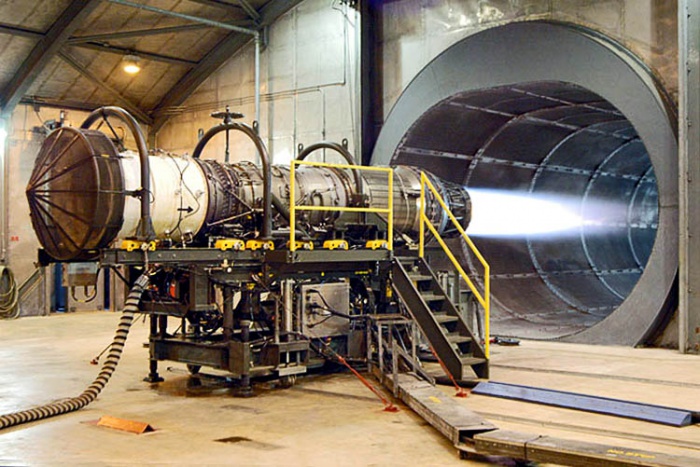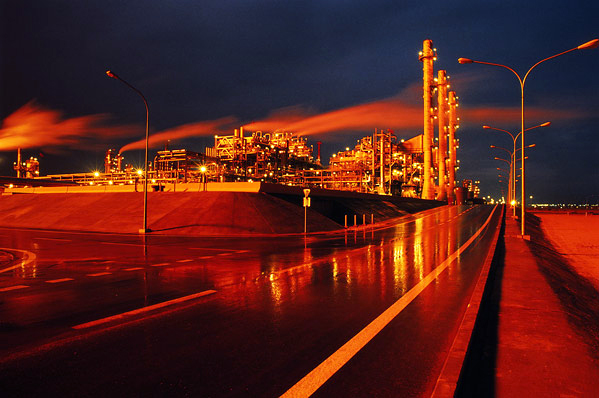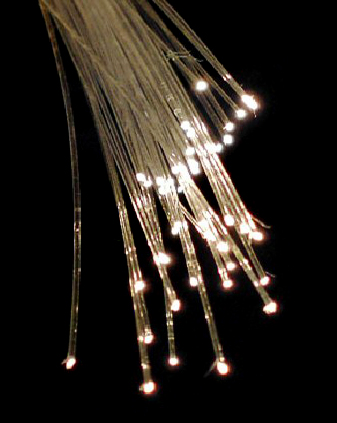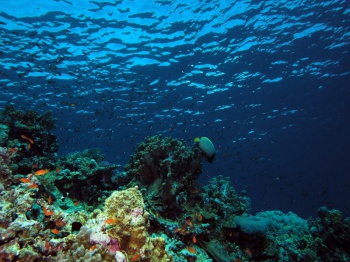
Rhenium, The F 15 engine by Wikimedia
Commons
The common warnings about the drastic abuse of planet Earth and its resources that you hear at least once a week on TV or read in newspapers or other media has become somehow obsolete among the general public over the past few years. The hype connected to the realization that we’re running out of natural resources is often undermined by recent discoveries of new mining locations and rapid developments in renewable resources. Shiny examples of renewed hope for oil companies are Alberta’s oil sands, located in three major areas in northeast Alberta underlying 140,200 square kilometres, with the potential to give up over 175 billion barrels of oil that can be recovered with today’s technology.
However, the scary thing that only few people have been able to realize is that with figures of some of our key resources rising at a slightly increased pace, consumption is increasing ten times faster. Our society is thirstier and hungrier than ever. Our independence on crude oil and natural gas is quite young but a very powerful phenomenon.
Origins of Crude Oil

An oil refinery in Kuwait by Wikimedia
Commons
Surprisingly enough, oil fever hasn’t started in any of today’s oil giants like Saudi Arabia, Venezuela, Russia, or Kuwait — countries that found their liquid treasure in endless sands spreading over their territories over a hundred years after it was first discovered in the heart of Europe in 1938 by pharmacist Ignac Lukasiewicz in small village of Ulaszowice in former Austria-Hungary, now Poland. Lukasiewicz built the first oil wells and started to refine the oil, creating the ancestors of the substance as we know it today. His attempts to use refined oil as a fuel for street lamps in his neighbourhood are considered to be the foundation of the modern oil industry.
A few years after the Polish discovery, the first oil well was established in Oil Creek, Pennsylvania. Since the introduction of drilling technology, oil started to be exploited at an enormous rate in the car and aviation industries. Later on, natural gas joined the league of elite resources, having been used mostly as a fuel in heat production businesses.
The true nature of our dependence on crude oil was unmasked during the oil crisis in the ’70s. The embargo imposed on the retrieving of crude oil by Arab Countries in 1973 and the Iranian Revolution six years later led to a dramatic rise in prices on world markets. We still face the problem of increasing oil and gas prices whenever there is turmoil in the Middle East or in any other region possessing significant oil or gas reserves.
Finding Substitution
It is obvious that once we run out of fossil fuels, it would be better to be prepared for such a change. This means that we should invest as much as possible in the development of alternative fuels. Say, in 2060, our cars won’t run on petrol anymore — they’ll be running on biofuels. These might be obtained from bacteria, more specifically cyanobacteria removed from hot springs and genetically modified to produce biofuel. The US company Joule has already begun with the production of biofuels in New Mexico. They are able to produce over 200 million litres of biofuel a year from only 2,000 hectares.
We’re Barking up the Wrong Tree
 Fibreoptic by Wikimedia Commons
Fibreoptic by Wikimedia Commons
Another substantial problem that we mostly don’t consider to be grave but that we’ll have to face soon is the scarcity of resources not very well known to general public — for example, materials used in computers, optic fibres, and informational technologies in general. These are the resources we tend to overlook but should be concerned with in the first place.
Phosphorus: The New Gold?
Every farmer will tell you that phosphorus is as crucial for crops as water. All plants need it for their development and growth. The problem with phosphorus is that it is severely limited. Our planet contains only so much, and we cannot properly synthesize or replace it. Over two thirds of the world’s phosphates are located in China, Morocco, and Western Sahara. Over ninety percent of them are used as fertilizers. Their price increased by 800 per cent between 2006 and 2008. It is estimated that in next thirty to forty years, demand will be much greater than supply and we simply won’t be able to feed the human race without recycling the phosphorus from organic leftovers.
My Computer Needs Erbium?!
It’s not only our everyday food resources that are at stake. We also need very specific kind of materials to run our IT world. The vast majority of the population doesn’t have a clue about what materials are needed to run their computers, laptops, and smart phones.
Just to illustrate our dependence on materials of the utmost scarcity, let’s take a look at a few examples.
 Indium wire by Wikimedia Commons
Indium wire by Wikimedia Commons
Indium is an element used in touch screens of our smart phones and tablets. It’s also heavily used in LCD displays, flat screen televisions and computer monitors, and solar cells. Europium is single-handedly responsible for the red colour in the spectrum our computer screens use. Our emails travel via optic fibres thanks to erbium.
There are hundreds of strange materials and elements we come into contact with in our everyday lives that are crucial for us. We might run out of some of these elements in next five to ten years.
Recycle, Recycle, Recycle…
Some of materials mentioned above can, however, be recycled. This is currently the only option we have if we don’t find subsidies for the elements and materials that are currently in use. An examples that is most encouraging is the acute insufficiency of rhenium. It’s probably the scarcest element of all.
Rhenium is used in making high-temperature super alloys that are used in a number of applications, such as in commercial and military (F-15 and F-16) jet engines and in natural gas turbines used to generate electricity. It’s also one of the most expensive elements, trading as highly as $11,000/kg in 2008. Despite the threatening figures, we are able to recycle it, largely thanks to General Electric, who also started the development of alloys with a much lower percentage of rhenium in them. Unfortunately, the development was halted by the discovery of a huge repository of rhenium in Queensland, Australia in 2010.
Where Should We Start Looking?
 Under the water by Derek Keats
Under the water by Derek Keats
As many fantasy and science-fiction writers and authors suggest, we should look under the water. We need our captain Nemo — someone who won’t be afraid to look where nobody has ever looked before. Scientists in Tokyo have recently discovered large quantities of scarce elements residing in sediments of the Atlantic Ocean, near Tahiti and Hawaii. One kilometre squared has the potential to satisfy almost one fifth of the annual consumption of these elements. The question that remains is, ‘What will be the impact on the environment?’
The Vancouver-based company Nautilus Minerals has begun preparations to launch drilling in underwater mines in the Bismarck Sea of Papua New Guinea. A successful exploration drilling campaign conducted at Nautilus Minerals’ tenements has enabled the company to increase the resource estimate at its Solwara 1 project and to declare a maiden Inferred Resource at the nearby Solwara 12 deposit. Solwara 1 is located over 1,600 metres under the sea.




